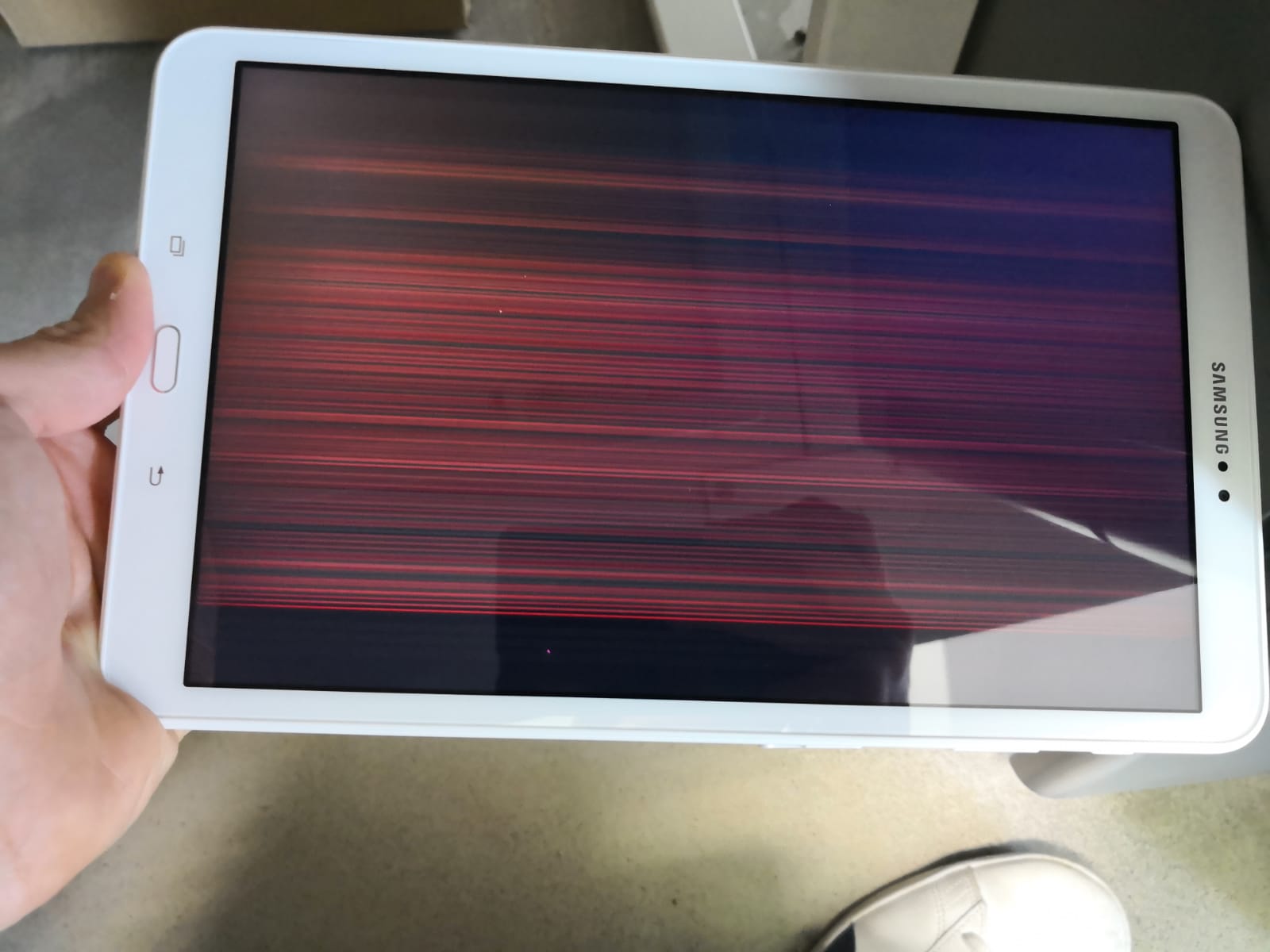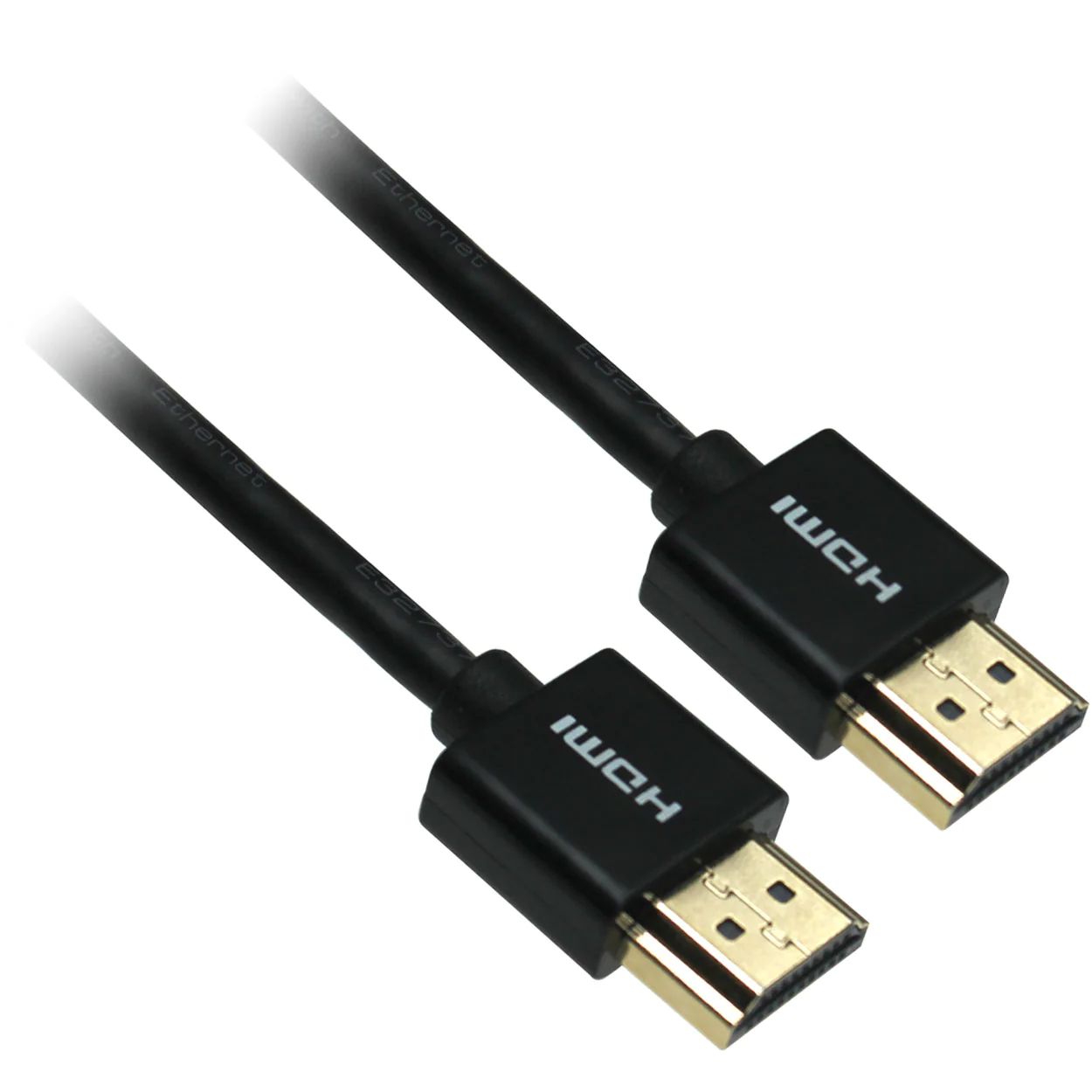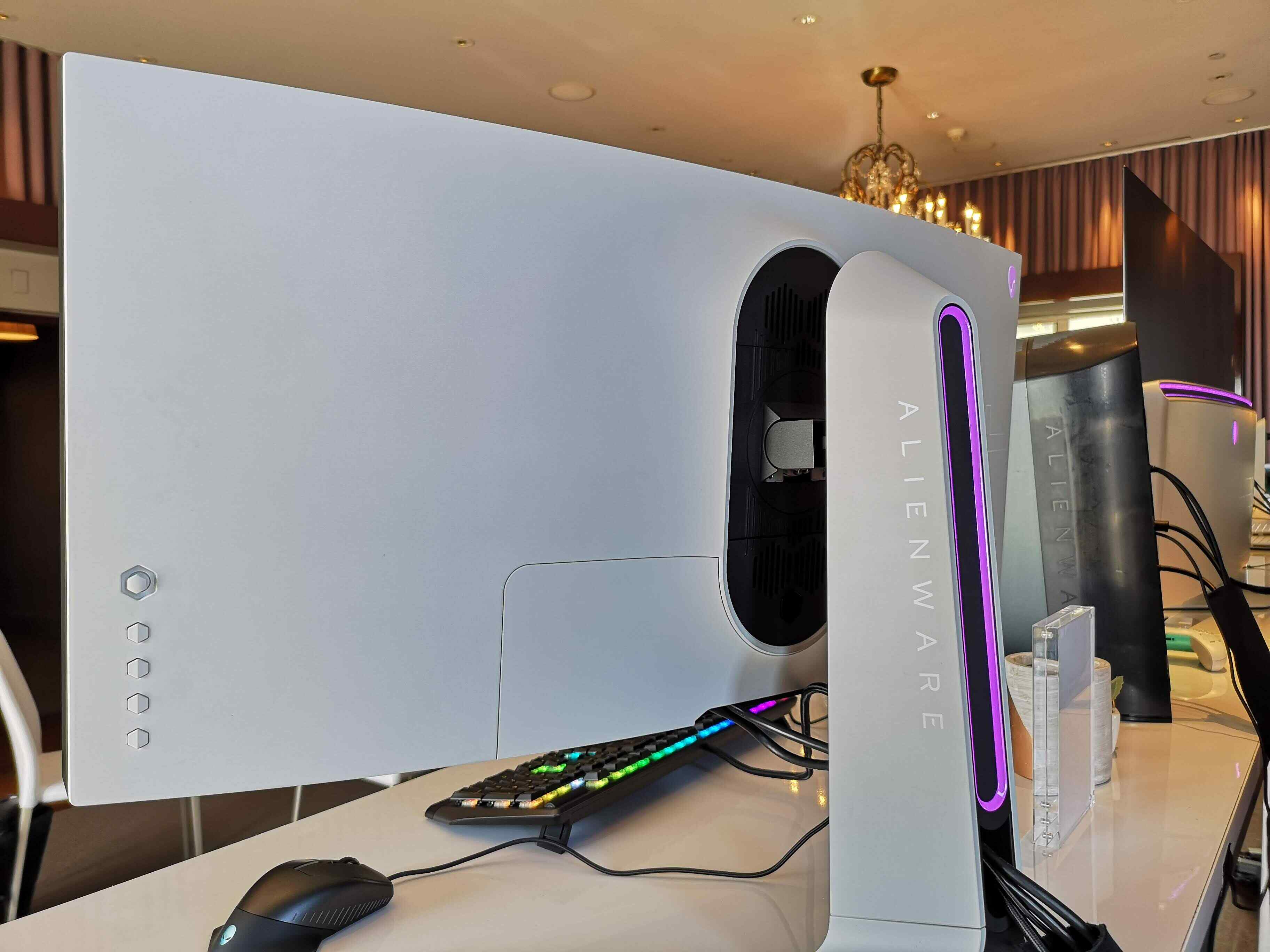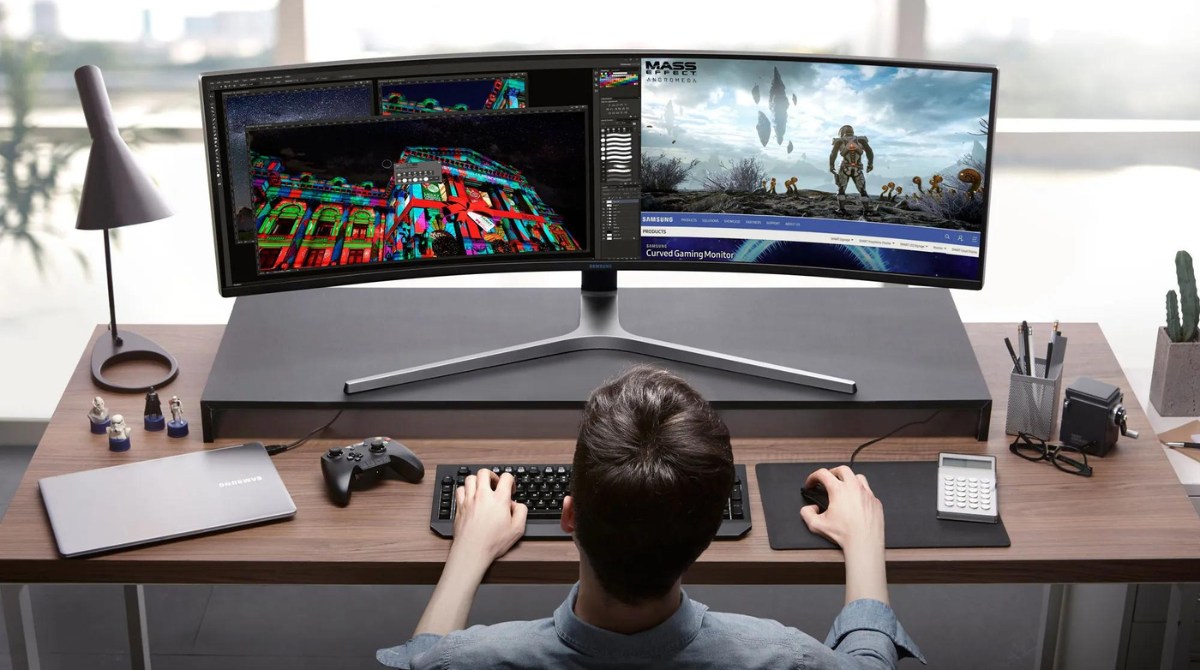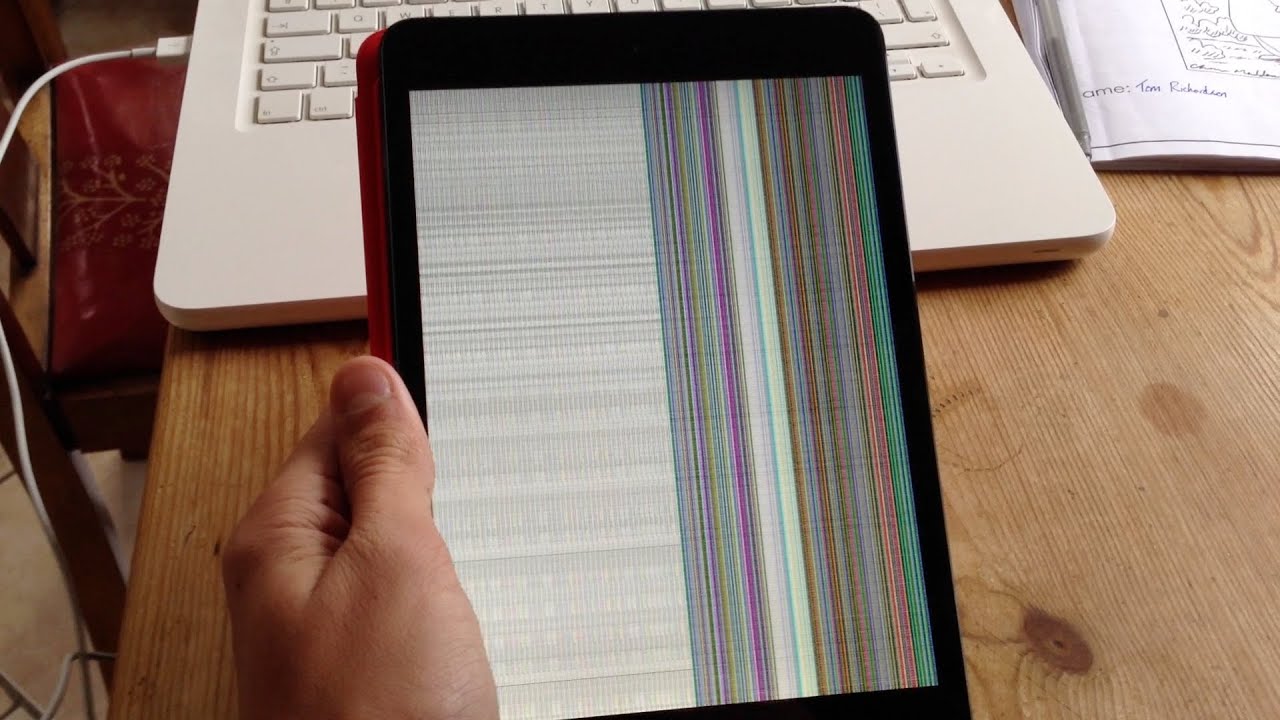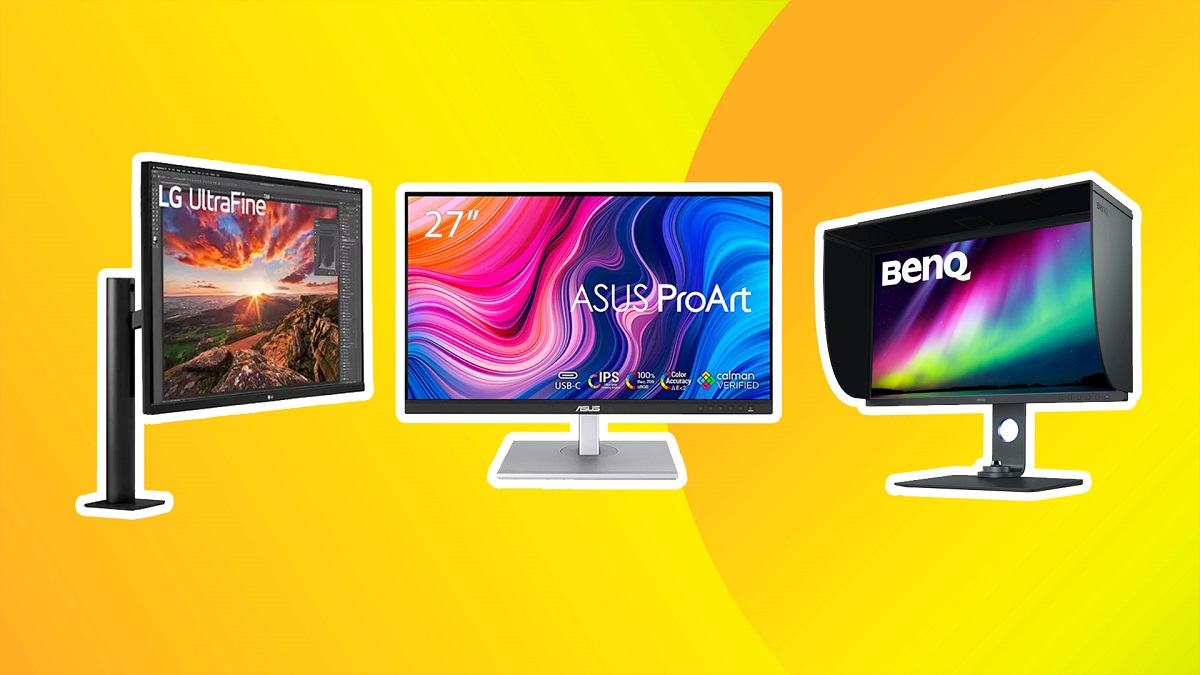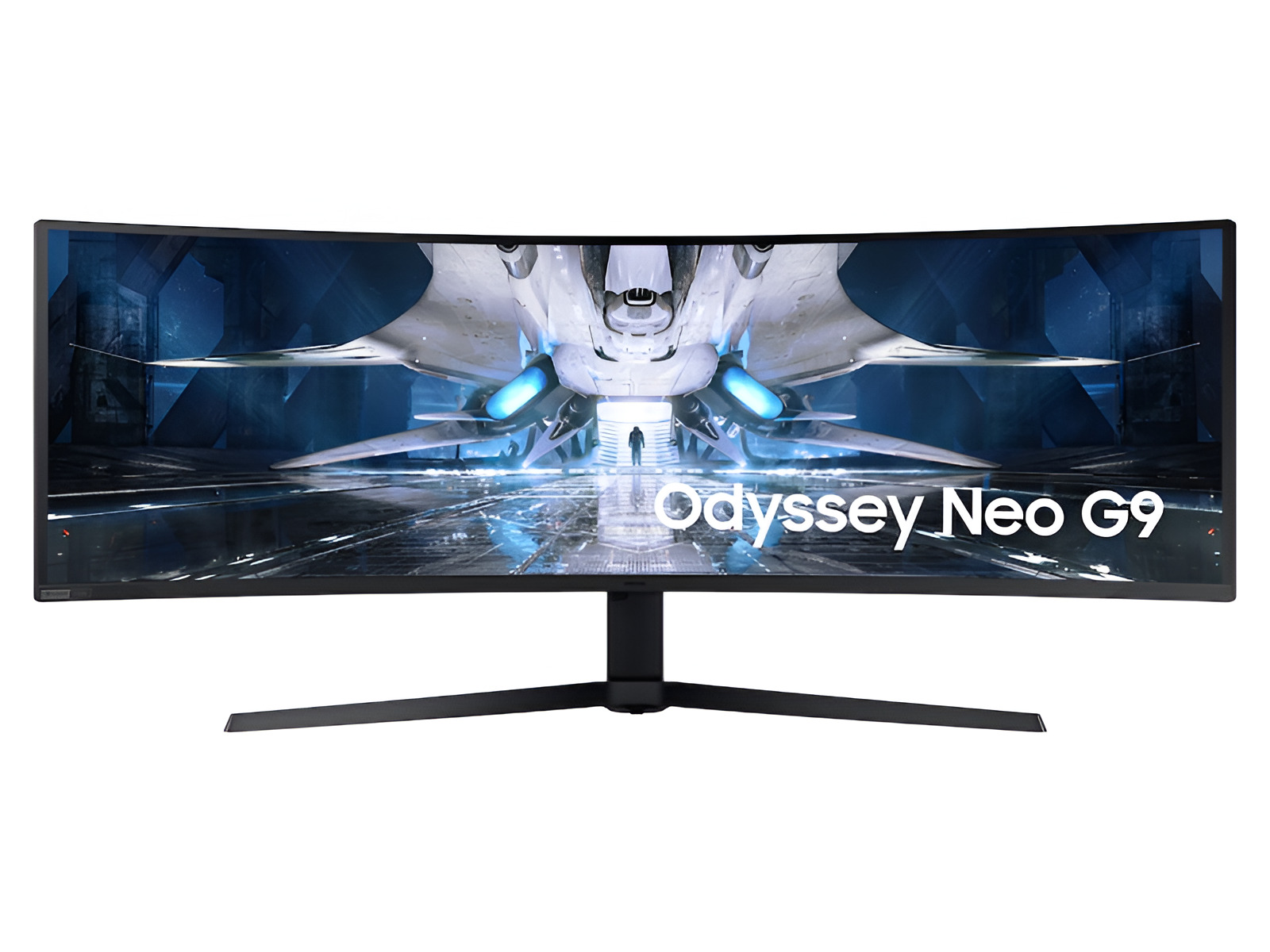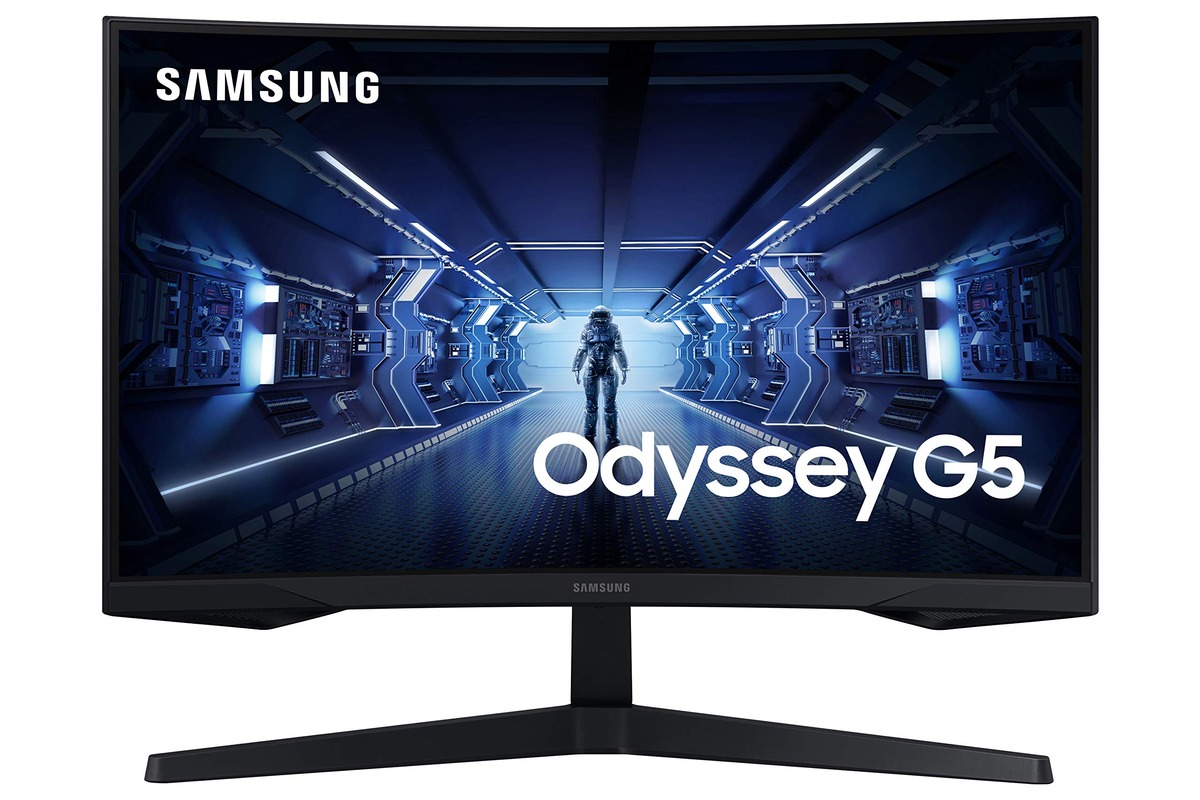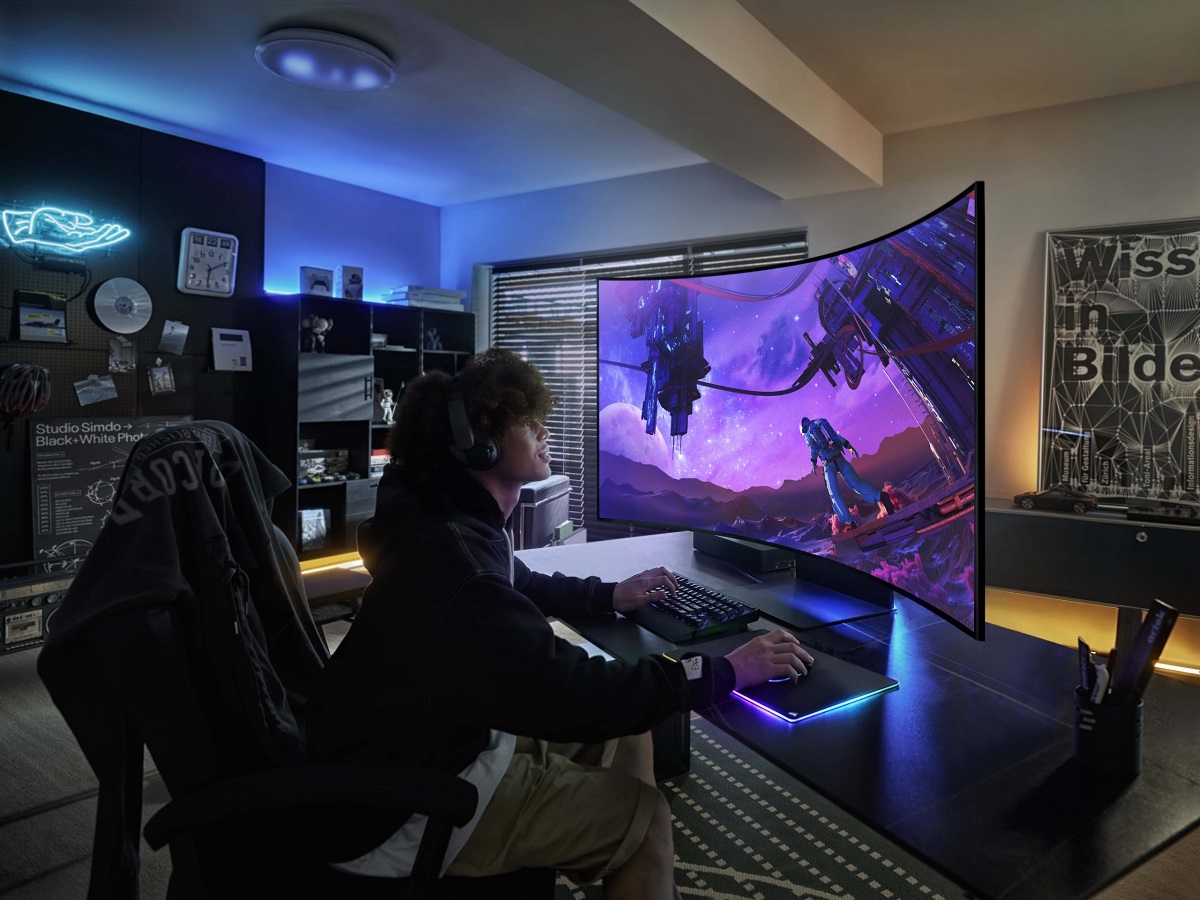Introduction
Having a Samsung tablet can provide you with a convenient way to stay connected, get work done, and enjoy entertainment on the go. However, it can be frustrating when you encounter issues with your tablet, such as a flickering screen. A flickering screen can greatly disrupt your user experience and make it difficult to fully utilize the tablet’s features.
Understanding the causes of screen flickering on Samsung tablets is the first step towards finding a solution. There are several reasons why your tablet’s screen may flicker, ranging from software issues to faulty hardware. In this article, we will explore the common causes of screen flickering and provide you with practical solutions to resolve the issue.
It is important to note that screen flickering is not limited to a specific Samsung tablet model. Whether you own a Galaxy Tab S7, Tab A, or any other variant, the information provided in this article will apply to most Samsung tablets.
By the end of this article, you will have a better understanding of why your Samsung tablet screen is flickering and be equipped with the knowledge to fix the issue and restore a smooth and enjoyable tablet experience.
Common Causes of Screen Flickering on Samsung Tablets
Screen flickering on Samsung tablets can be caused by various factors. Understanding these common causes can help you pinpoint the problem and find an appropriate solution. Here are some of the most frequent reasons for screen flickering on Samsung tablets:
- Software Issues: One of the common causes of screen flickering is software-related. It can occur if there are bugs, conflicts, or compatibility issues with the operating system or installed apps. These issues can lead to inconsistent screen refresh rates or display glitches.
- Overheating: Excessive heat can also trigger screen flickering on Samsung tablets. When the tablet’s components heat up due to heavy usage, it can cause the screen to flicker temporarily. Overheating can be a result of resource-intensive applications, prolonged gaming sessions, or inadequate ventilation.
- Display Settings: Incorrect display settings can contribute to screen flickering problems. Adjusting the brightness level, adaptive display settings, or the screen timeout settings may help resolve the issue. It is worth checking if any changes to the display settings have been made recently.
- Faulty Hardware: In some cases, screen flickering can be attributed to defective hardware components. This can include a faulty display panel, loose cable connections, or a malfunctioning backlight. Hardware issues generally require expert assistance or a replacement to resolve the problem.
Identifying the cause of screen flickering on your Samsung tablet plays a crucial role in finding an appropriate solution. In the next section, we will provide step-by-step instructions on how to fix screen flickering on Samsung tablets, regardless of the cause.
Software Issues
Software-related problems are a common cause of screen flickering on Samsung tablets. These issues can arise due to conflicts between the operating system and installed apps or other software glitches. Here are some steps you can take to troubleshoot and fix software-related screen flickering issues:
- Restart the Tablet: Start by performing a simple restart of your Samsung tablet. This can help resolve temporary glitches and refresh the system.
- Update the Operating System: Ensure that your tablet is running the latest version of the operating system. Manufacturers often release software updates that address bugs and improve system stability. Go to the Settings menu, select Software Update, and check for any available updates.
- Check for App Updates: Outdated or buggy apps can cause screen flickering on your tablet. Open the Google Play Store or Samsung Galaxy Store and go to My apps & games to check for app updates. Update all the apps to their latest versions.
- Uninstall Problematic Apps: If the screen flickering issue started after installing a specific app, it might be the culprit. Uninstall the app and see if the problem resolves. You can uninstall apps by going to Settings, selecting Apps, and choosing the app you want to uninstall.
- Boot into Safe Mode: Booting your tablet in Safe Mode can help determine if a third-party app is causing the screen flickering. In Safe Mode, only pre-installed system apps are active. To enter Safe Mode, press and hold the Power button, then tap and hold the Power Off option until the Safe Mode option appears. Tap on Safe Mode to enter.
These steps should help you troubleshoot and fix screen flickering issues caused by software problems. If the problem persists, proceed to the next section for additional solutions.
Overheating
Overheating can be another contributing factor to screen flickering on Samsung tablets. When the internal components of your tablet get too hot, it can lead to temporary display issues. Here are some steps you can take to address overheating and prevent screen flickering:
- Avoid Overloading the Tablet: Running resource-intensive apps or performing tasks that require a lot of processing power for an extended period can cause your tablet to overheat. Try to avoid using multiple demanding apps simultaneously or running heavy tasks for a long duration.
- Give Your Tablet a Break: If you notice your tablet getting hot and the screen starts flickering, it’s a sign that it needs a break. Turn off the tablet and let it cool down for a while before using it again. This allows the internal components to cool down and helps prevent further overheating.
- Ensure Proper Ventilation: Blocking the ventilation ports of your tablet can contribute to overheating. Make sure that the air vents are not obstructed by any objects and that there is sufficient airflow around the tablet. Using the tablet on a flat surface or a cooling pad can also help dissipate heat more effectively.
- Adjust Power Saving Settings: Lowering the screen brightness, using power-saving mode, and disabling unnecessary features can help reduce the workload on your tablet’s hardware, thus minimizing the risk of overheating.
- Remove Case or Cover: If you use a protective case or cover on your tablet, it may trap heat and contribute to overheating. Consider removing the case while using the tablet to allow better heat dissipation.
By following these steps, you can mitigate overheating issues on your Samsung tablet and prevent screen flickering caused by excessive heat. If the problem persists, proceed to the next section for further troubleshooting steps.
Display Settings
Incorrect display settings can sometimes lead to screen flickering on Samsung tablets. Making adjustments to the display settings can help resolve the issue. Here are some steps you can take to adjust the display settings and potentially fix the screen flickering problem:
- Adjust Brightness: Excessively high or low brightness levels can cause strain on the screen and lead to flickering. Go to the Settings menu and select Display. Adjust the brightness slider to a comfortable level and check if the screen flickering improves.
- Disable Adaptive Brightness: Adaptive brightness is a feature that automatically adjusts the screen brightness based on ambient light conditions. However, this feature may sometimes cause screen flickering. To disable adaptive brightness, go to Settings, select Display, and turn off the Adaptive brightness option.
- Check Screen Timeout: Screen flickering can occur if the screen timeout settings are too short. Go to Settings, select Display, and adjust the screen timeout duration to a longer period. This will prevent the screen from turning off too quickly and potentially causing flickering when it wakes up.
- Disable Auto-Rotate: Automatic screen rotation can sometimes cause screen flickering. If you notice flickering when the screen rotates, turn off the Auto-rotate screen option in the Display settings. This will keep the screen orientation fixed and potentially resolve the issue.
- Reset Display Settings: If none of the above steps work, you can try resetting the display settings to their default values. Go to Settings, select Display, and look for the Reset or Reset Display Settings option. Confirm the reset and check if the screen flickering is resolved.
By adjusting the display settings on your Samsung tablet, you can alleviate screen flickering issues caused by incorrect brightness, adaptive settings, or screen timeout configurations. If the problem persists, continue to the next section for additional troubleshooting steps.
Faulty Hardware
In some cases, screen flickering on Samsung tablets can be attributed to faulty hardware components. Hardware issues require more specialized attention as they may necessitate repairs or replacements. Here are a few steps you can take to address faulty hardware and potentially resolve the screen flickering problem:
- Contact Manufacturer Support: If your tablet is still under warranty, it is recommended to reach out to the manufacturer’s support team. They can provide guidance and assistance in diagnosing and resolving the hardware issue. Follow their instructions for any troubleshooting steps or potential repairs.
- Seek Professional Repair: If your tablet is no longer under warranty or the manufacturer recommends repair, consider taking it to a professional technician or an authorized service center. They have the necessary expertise to identify and fix hardware-related problems, such as a faulty display panel or loose cable connections.
- Consider Replacement: If the hardware issue is severe and the cost of repair is prohibitively high, you might need to consider replacing your Samsung tablet. This is typically a last resort option if the tablet is older or if the repair cost surpasses the value of the device.
Dealing with faulty hardware can be challenging and requires professional expertise. It is essential to seek the advice of qualified technicians to accurately diagnose and address the issue. They can provide appropriate solutions or recommendations based on the specific hardware problem encountered.
Remember, hardware issues are less common than software or settings-related problems. Before assuming that the hardware is at fault, exhaust all other troubleshooting steps mentioned in previous sections. This will help ensure that the screen flickering problem is not due to other factors that can be easily resolved.
How to Fix Screen Flickering on Samsung Tablets
Experiencing screen flickering on your Samsung tablet can be frustrating, but there are several steps you can take to address and resolve the issue. Whether the problem is caused by software issues, overheating, display settings, or faulty hardware, the following solutions can help fix screen flickering on your Samsung tablet:
- Restart the Tablet: Perform a simple restart of your tablet to refresh the system and resolve temporary glitches that may be causing the screen flickering.
- Update the Operating System: Ensure that your tablet is running the latest version of the operating system. Software updates often address bugs and improve system stability.
- Adjust Display Settings: Make adjustments to the brightness level, adaptive display settings, screen timeout, and auto-rotate options to find the optimal settings that reduce screen flickering.
- Clear Cache and Data: Clearing the cache and data of problematic apps can help resolve conflicts and eliminate screen flickering caused by application-related issues.
- Repair or Replace Faulty Hardware: If the screen flickering persists and is determined to be caused by faulty hardware, consider reaching out to the manufacturer’s support team for repairs or consult a professional technician for assistance.
It’s important to note that not all tablets will experience the same issues or require the same solutions. The steps provided here serve as general guidelines, but your specific situation may require additional troubleshooting or assistance from professionals.
By following these steps, you can increase the chances of restoring a smooth and flicker-free experience on your Samsung tablet. If the issue persists, don’t hesitate to seek help from technical support or professional repair services that specialize in Samsung tablets.
Restart the Tablet
When you encounter screen flickering on your Samsung tablet, one of the simplest and most effective solutions is to restart the device. Restarting the tablet allows the system to refresh and potentially resolves temporary software glitches that may be causing the flickering. Here’s how you can restart your Samsung tablet:
- Press and hold the power button located on the side or top of your tablet.
- A menu will appear on the screen, showing options like Power Off, Restart, or Reboot.
- Tap on the Restart or Reboot option, and wait for the tablet to power down and turn on again.
After the tablet restarts, check if the screen flickering issue has been resolved. In many cases, a simple restart can fix temporary glitches that cause flickering and restore the tablet’s normal functionality.
If restarting the tablet doesn’t fix the issue, proceed to the next troubleshooting steps to further diagnose and resolve the screen flickering problem.
Update the Operating System
Keeping your Samsung tablet’s operating system up to date is crucial for optimal performance and stability. Software updates often come with bug fixes, security enhancements, and improvements that can resolve various issues, including screen flickering. If you’re experiencing screen flickering on your Samsung tablet, updating the operating system is a recommended step to take. Here’s how you can update the operating system:
- Go to the Settings menu on your tablet. You can access this by swiping down from the top of the screen and tapping the gear icon, or by finding the Settings app in your app drawer.
- Scroll down and select the “Software Update” option. The name of this option may vary depending on your tablet’s model and operating system version.
- Tap on “Download and Install” or a similar option to check for available updates.
- If there are updates available, follow the on-screen prompts to download and install them. You may need to connect your tablet to a stable Wi-Fi network and ensure it has sufficient battery power.
- Once the update is installed, your tablet will reboot to complete the process. This may take a few minutes.
After the operating system update is complete and your tablet restarts, check if the screen flickering issue has been resolved. In many cases, software updates contain fixes for bugs and known issues, which can help eliminate screen flickering problems.
If updating the operating system doesn’t resolve the issue, continue to the following sections for additional troubleshooting steps.
Adjust Display Settings
Incorrect display settings can sometimes contribute to screen flickering on Samsung tablets. Making adjustments to the display settings can help mitigate this issue. Here’s how you can adjust the display settings to potentially fix the screen flickering problem:
- Adjust Brightness: Excessively high or low brightness levels can strain the screen and cause flickering. To adjust the brightness, go to the Settings menu and select “Display”. Look for the brightness slider and adjust it to a comfortable level. Check if the screen flickering improves.
- Disable Adaptive Brightness: Adaptive brightness is a feature that automatically adjusts the screen brightness based on ambient light conditions. However, this feature may sometimes cause screen flickering. To disable adaptive brightness, go to the Settings menu, select “Display”, and turn off the “Adaptive brightness” option.
- Check Screen Timeout: A short screen timeout duration can cause flickering when the screen wakes up frequently. To adjust the screen timeout, go to the Settings menu, select “Display”, and look for the “Screen timeout” or “Sleep” setting. Increase the duration to prevent the screen from turning off too quickly.
- Disable Auto-Rotate: Automatic screen rotation can sometimes cause screen flickering. If you notice flickering when the screen rotates, disable auto-rotate by swiping down from the top of the screen to access the quick settings panel. Look for the auto-rotate icon and tap it to lock the screen orientation.
- Reset Display Settings: If none of the above steps work, you can try resetting the display settings to their default values. To do this, go to the Settings menu, select “Display”, and look for the “Reset” or “Reset Display Settings” option. Confirm the reset and check if the screen flickering is resolved.
By adjusting the display settings on your Samsung tablet, you can potentially alleviate screen flickering issues caused by incorrect brightness levels, adaptive settings, screen timeout configurations, or auto-rotate functions. Experiment with different settings to find the optimal configuration for your device.
If adjusting the display settings doesn’t resolve the issue, proceed to the next section for additional troubleshooting steps.
Clear Cache and Data
Clearing the cache and data of problematic apps can help resolve conflicts and eliminate screen flickering caused by application-related issues. App caches and data can accumulate over time and may become corrupted, leading to performance issues. Follow the steps below to clear the cache and data on your Samsung tablet:
- Go to the Settings menu on your tablet.
- Select “Apps” or “Applications” from the list of available options.
- Scroll through the list of installed apps and identify the app or apps that may be causing the screen flickering issue.
- Tap on the problematic app to access its information page.
- On the app information page, you will find options to clear cache and clear data.
- Select “Clear Cache” to remove the temporary files stored by the app.
- If clearing the cache doesn’t resolve the issue, you can also select “Clear Data” to remove all app-related data, including saved preferences and settings. Note that clearing data will reset the app to its initial state.
- Repeat this process for any other apps that may be causing the screen flickering problem.
After clearing the cache and data of the problematic apps, restart your tablet and check if the screen flickering issue has been resolved. This process can help eliminate any app-related conflicts that may be causing the flickering and restore normal functionality to your tablet.
If clearing the cache and data doesn’t fix the screen flickering problem, continue to the next section for further troubleshooting steps.
Repair or Replace Faulty Hardware
If the screen flickering issue on your Samsung tablet persists and you have ruled out software and settings-related problems, it is possible that the problem may lie in faulty hardware components. Dealing with hardware issues requires expert assistance or, in some cases, replacement of the faulty components. Here are some steps you can consider:
- Contact Manufacturer Support: If your tablet is still under warranty, it is recommended to reach out to the manufacturer’s support team. They can provide guidance and assistance in diagnosing and resolving the hardware issue. Follow their instructions for any troubleshooting steps or potential repairs.
- Seek Professional Repair: If your tablet is no longer under warranty or the manufacturer recommends repair, consider taking it to a professional technician or an authorized service center. These experts have the necessary expertise and tools to diagnose and fix hardware-related problems, such as a faulty display panel or loose cable connections.
- Consider Replacement: In some cases, repairing the faulty hardware components can be costly and may not be worth the investment, especially if your tablet is older or if the repair cost exceeds the value of the device. In such situations, you may need to consider replacing your Samsung tablet with a new or refurbished model.
Remember, hardware issues are less common than software or settings-related problems. Before assuming that the hardware is at fault, ensure you have performed all the necessary software troubleshooting steps mentioned earlier in this article. This will help confirm that the screen flickering problem is not caused by other factors that can be easily resolved.
If you suspect a hardware issue, it is always best to seek professional assistance to accurately diagnose and address the problem. They can provide appropriate solutions or recommendations based on the specific hardware problem encountered.
Keep in mind that these steps are general guidelines, and the best course of action may vary based on your tablet’s model, warranty status, and the specific nature of the hardware issue.
Conclusion
Dealing with screen flickering on your Samsung tablet can be frustrating, but with the right troubleshooting steps, you can address and resolve the issue. By identifying the potential causes, such as software issues, overheating, display settings, or faulty hardware, you can take appropriate measures to fix the problem.
If you encounter screen flickering, start by restarting the tablet and updating the operating system. Adjusting the display settings, clearing cache and data of problematic apps, and ensuring proper ventilation can also help alleviate the issue. If these steps fail to resolve the problem, it may be necessary to seek professional assistance for repair or consider a replacement, especially if faulty hardware is diagnosed.
Remember, each Samsung tablet model may have unique features or variations in troubleshooting steps. It is important to refer to the specific device manual or manufacturer’s support resources for detailed instructions tailored to your tablet.
By following the steps outlined in this article and seeking professional help when needed, you can increase the chances of resolving screen flickering on your Samsung tablet and enjoy a seamless and enjoyable user experience once again.







